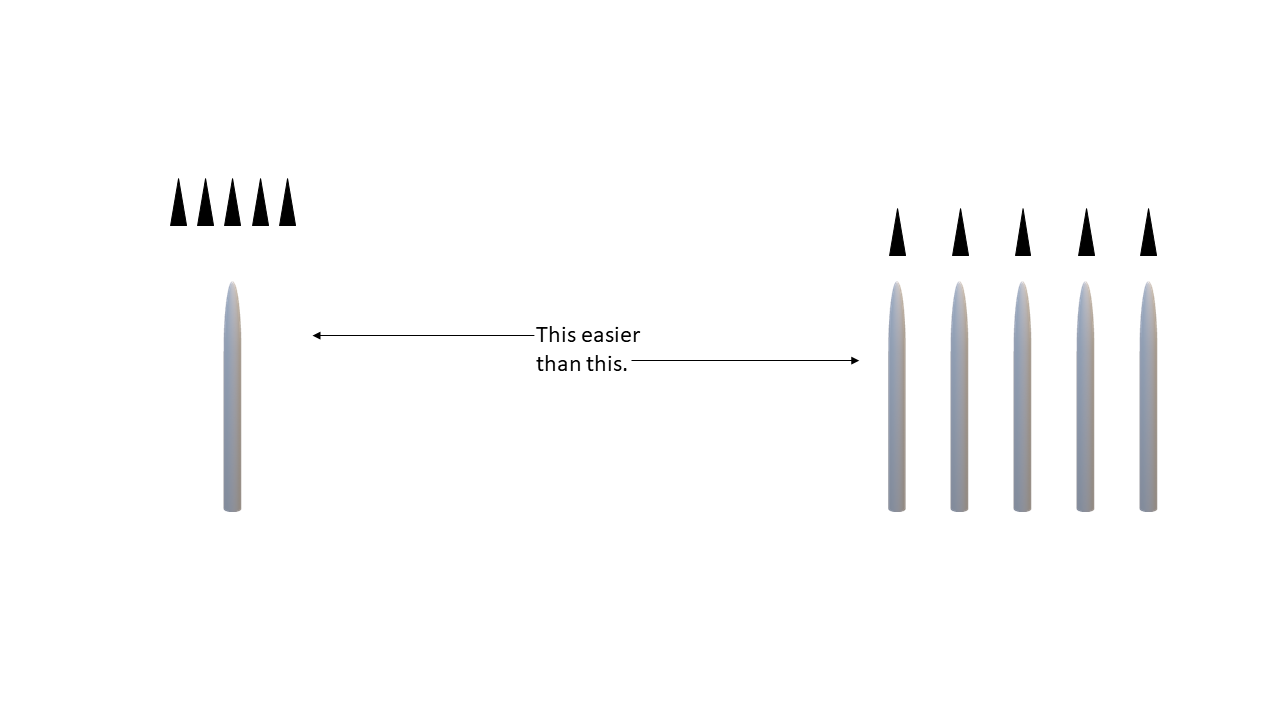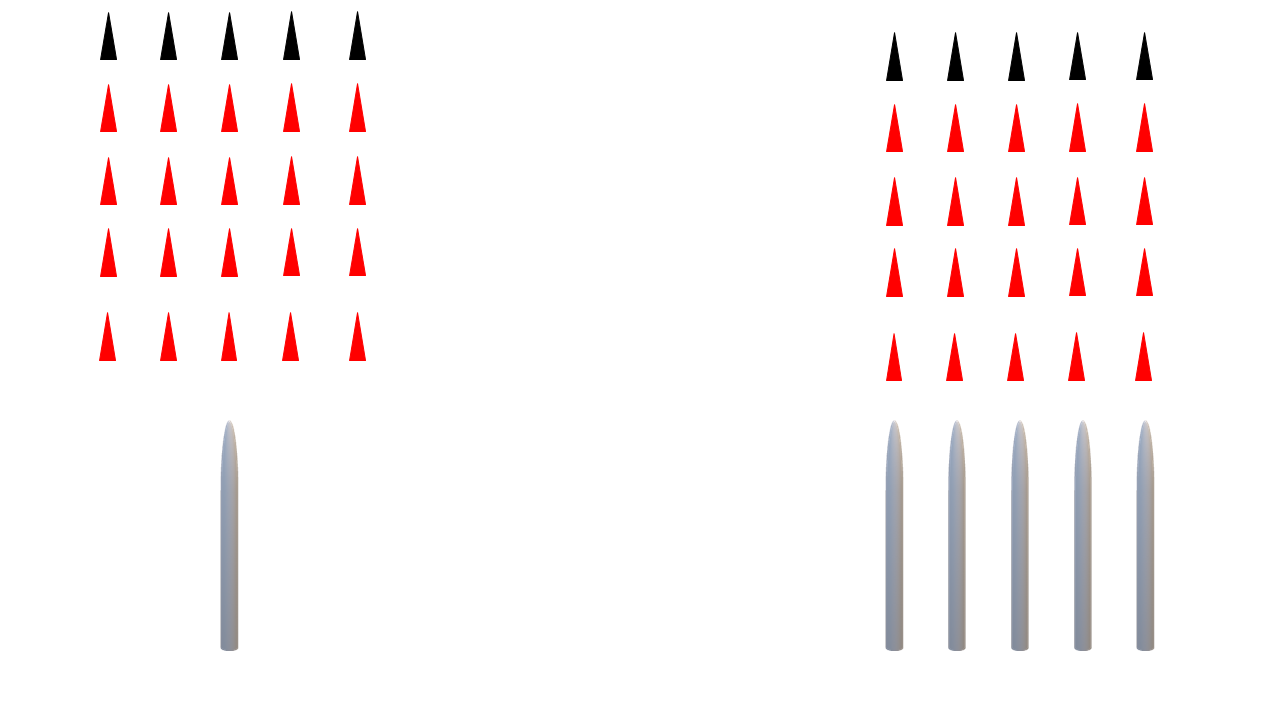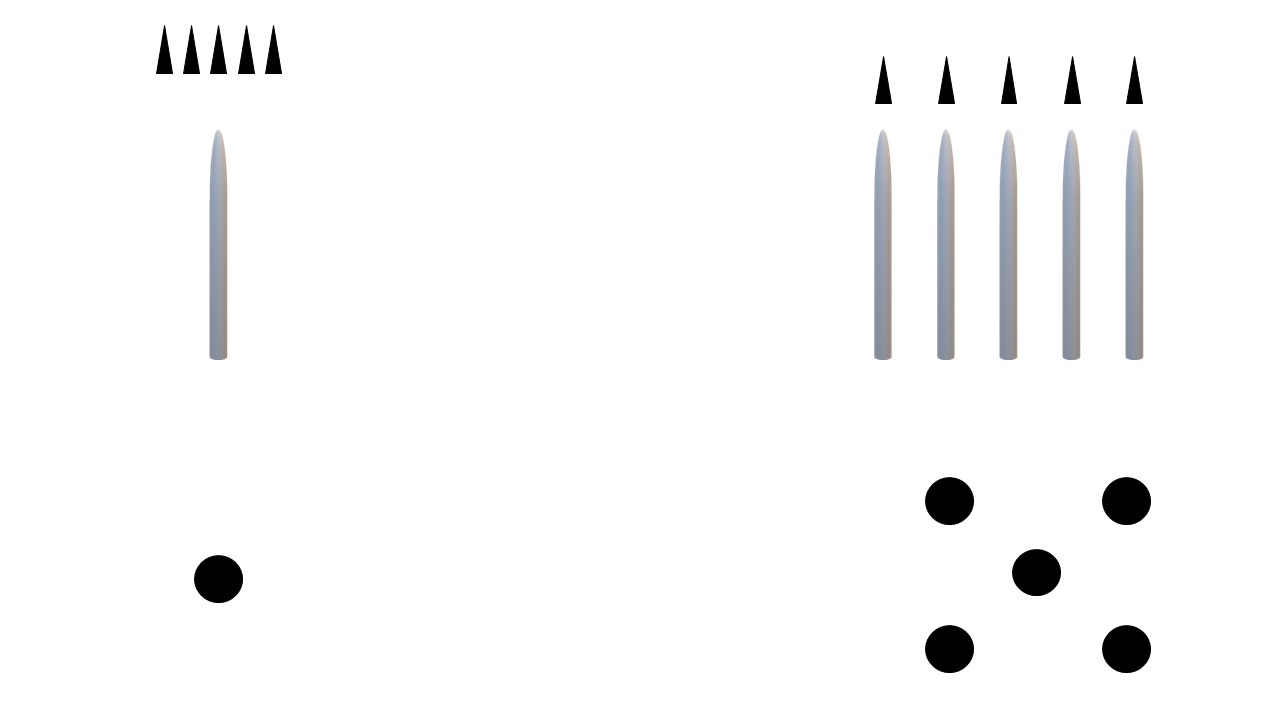MIRVs (Multiple Independently targetable Reentry Vehicles)
MIRVs refer to when a ballistic missile carries Multiple Independently targetable Reentry Vehicles, which are arranged on a bus.
The warheads are released shortly after the boost phase of the missile, decoys are also carried to enable the warheads to penetrate enemy missile defences.
The purpose of MIRVs is to deploy a greater number of warheads for a given number of missiles, as it is far easier to deploy multiple warheads on a single missile than to deploy another missile for each warhead.
This is especially important when considering practical limits on the number of missiles available, such as on a ballistic missile submarine, a mobile missile regiment, or a limited number of missile silos.
For a given number of warheads, whether or not they are deployed on MIRVed missiles may only affect the timings of the warheads reaching their targets.
MIRVs are often described as a way to overcome missile defence systems, however this is only the case when using MIRVs allows a greater total number of warheads to be deployed.
Let’s first consider 1 missile armed with 5 warheads and 5 missiles armed with 1 warhead each, none carrying any decoys, however this is unlikely as any state capable of manufacturing nuclear warheads is easily capable of manufacturing simple decoys.
In either case, there are 5 warheads traveling through space which the enemy will try to intercept, therefore there is no advantage to using MIRVs.
Next let’s consider if each missile is able to carry 5 objects, with one missile carrying 5 warheads without decoys, and 5 missiles carrying 1 warhead with 4 decoys each, however this is not necessarily accurate as decoys are usually smaller and lighter than warheads and therefore easier to carry on the bus.
In this case there are more total objects traveling through space that the enemy will try to intercept when using single warhead missiles, making them better at penetrating an enemy missile defence system.
Finally let’s consider that both MIRV and single warhead missiles carry both decoys and warheads, in reality the ratio of decoys to warheads will vary however for the purpose of this demonstration we will assume equal ratios of 4 to 1.
In this case there are an equal number of objects traveling through space that the enemy will try to intercept, therefore there is no advantage to using MIRVs.
In summary, when considering defeating enemy missile defence systems, the ratio of decoys to warheads and the total number of objects are most important, not whether the missile is armed with MIRVs.
Now we will consider the effect of basing both MIRVed missiles and single warhead missiles in silos.
With single warhead missiles, an enemy must commit at least 1 warhead per silo to have any chance of destroying the missiles. This can be a significant drain on the attackers deployed force as a large number of warheads will be required to target missile silos.
With MIRVed warhead missiles, an enemy can now justify committing multiple warheads per silo for a greater chance of destroying the missiles, this makes it easier for the attackers to target missile silos.
In summary, when considering the vulnerability of silo-based missiles, it is preferable to deploy a large number of single warhead missiles in silos to maximise the attackers warhead cost per silo. However, this may not always be possible due to the financial cost involved in building and operating missile silos.



















Comments
Post a Comment